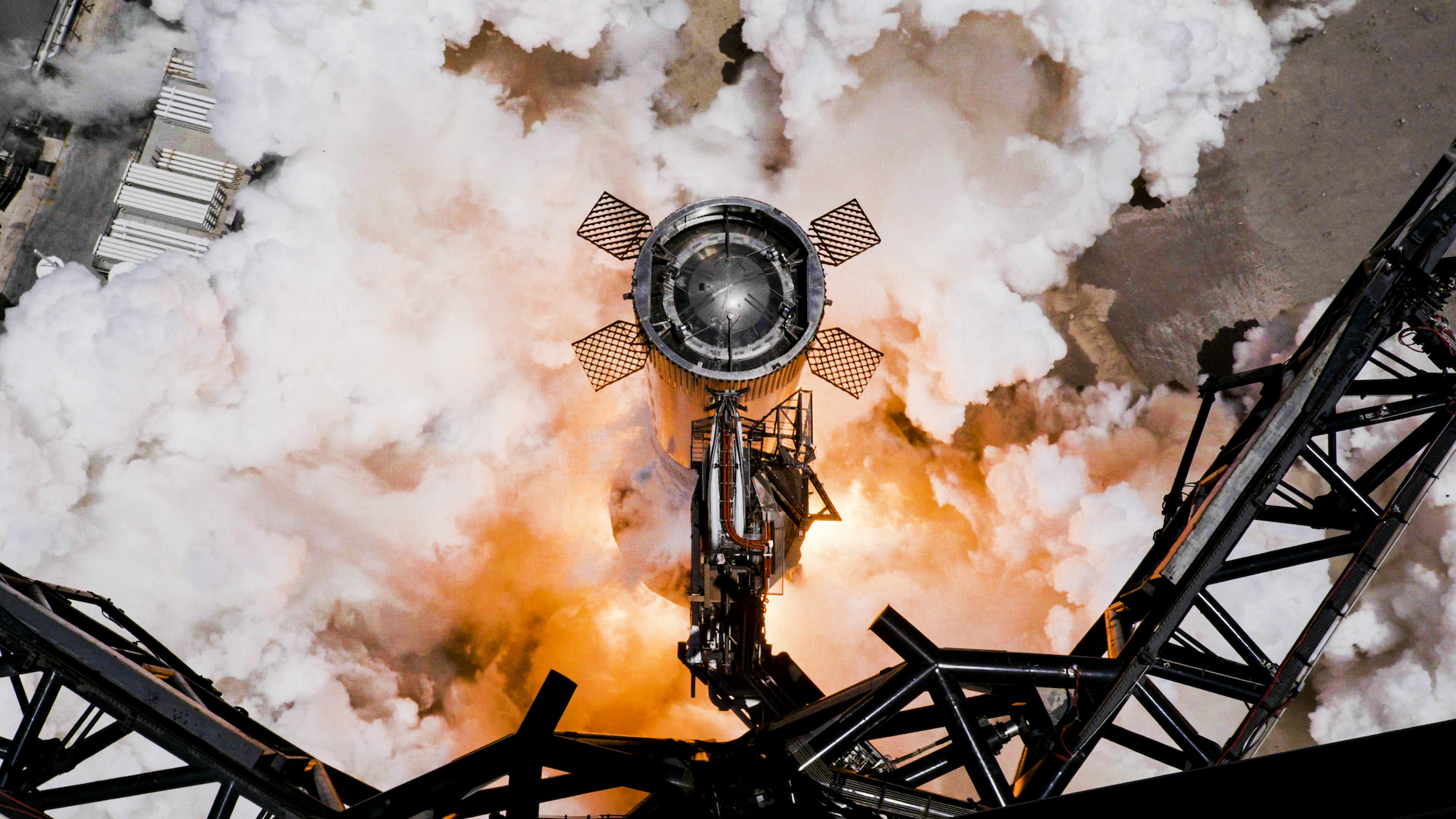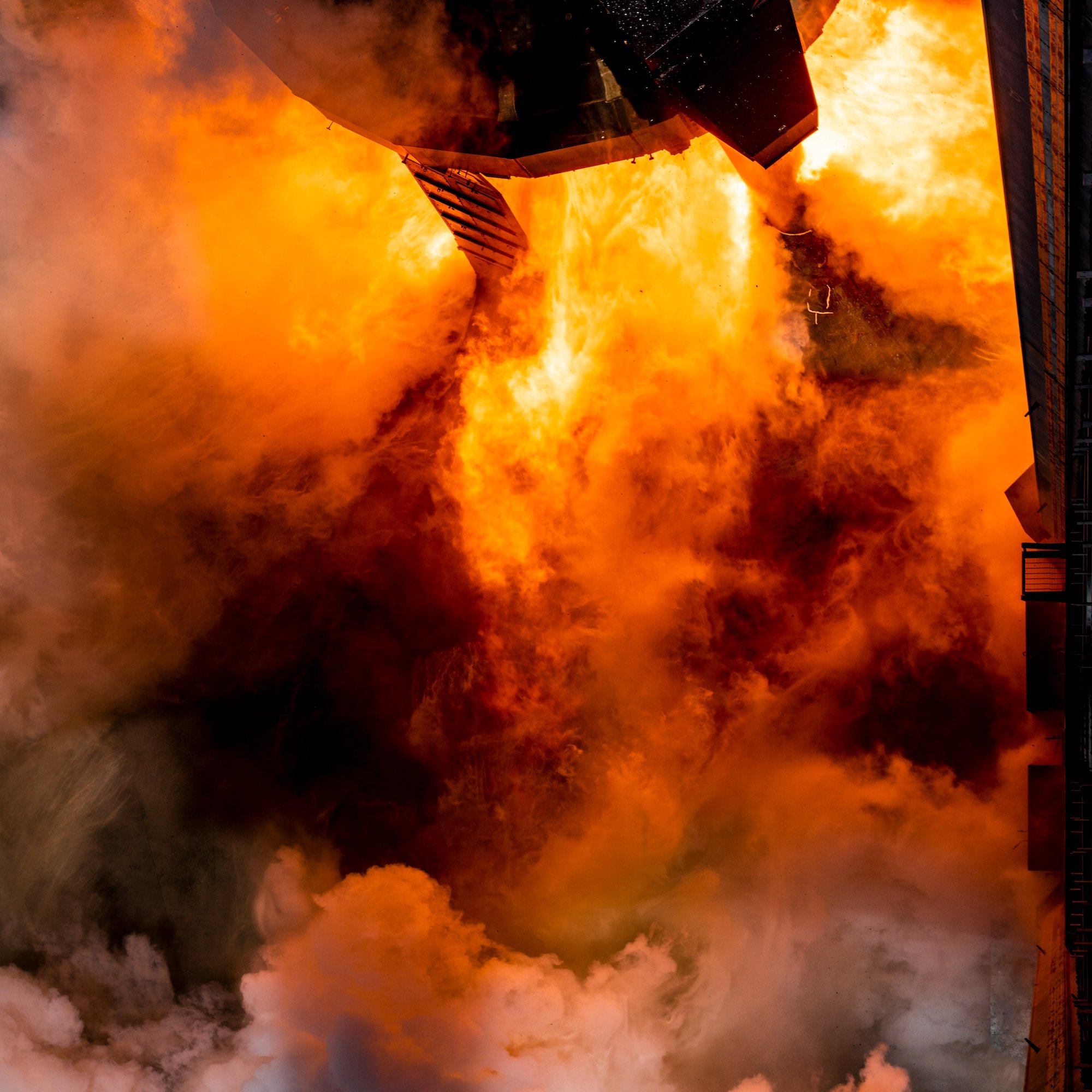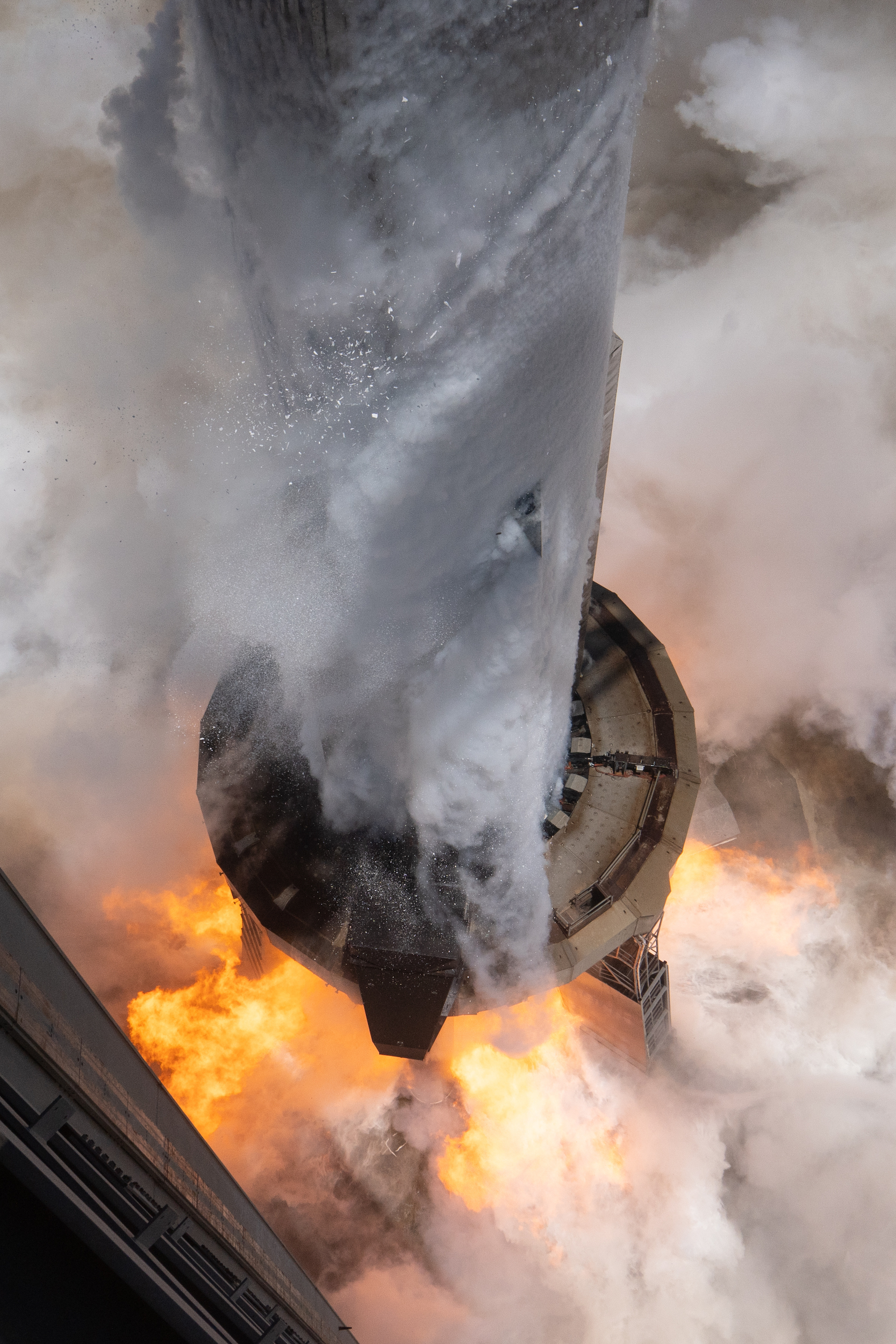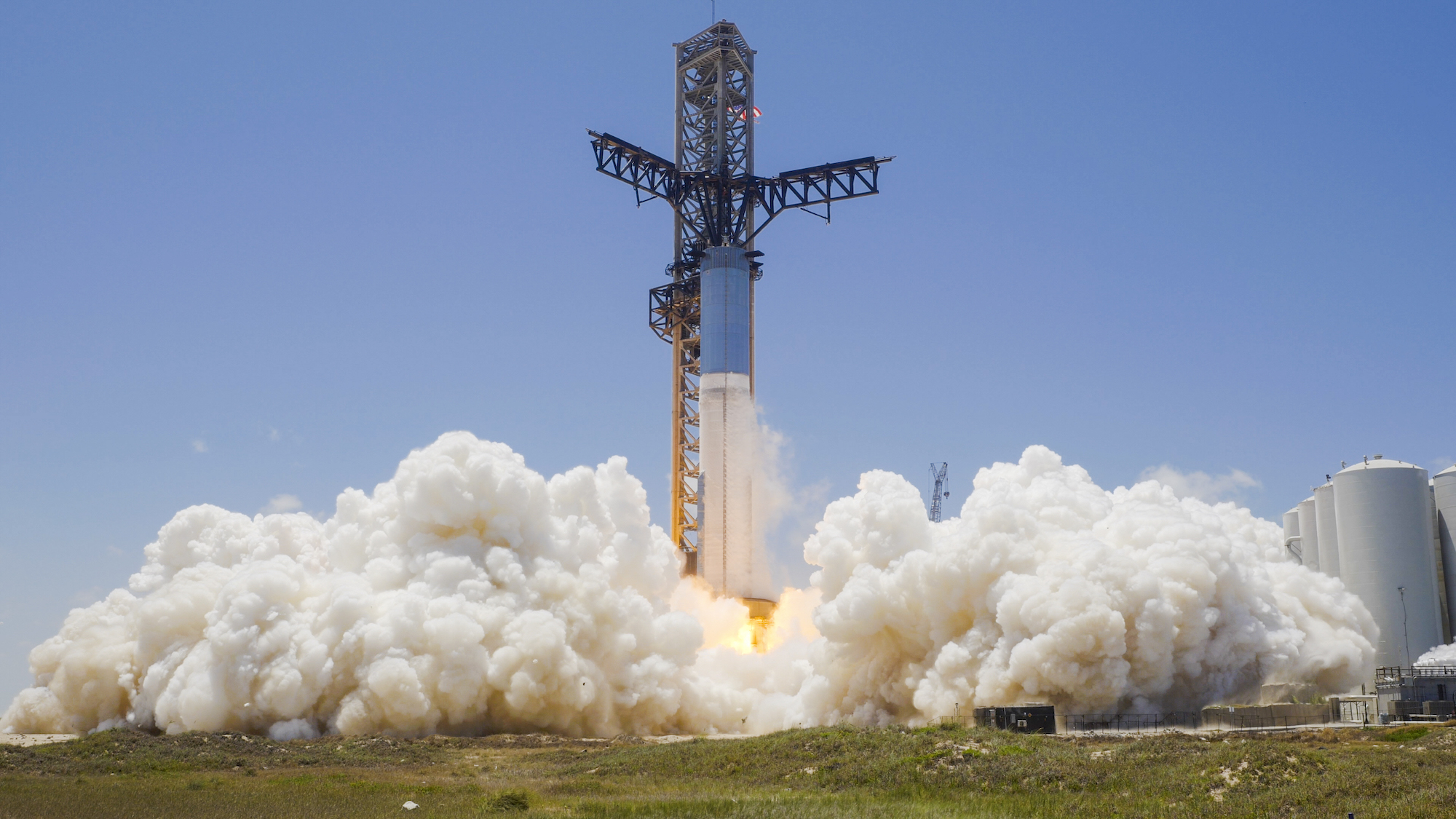SpaceX has shared a set of dramatic images captured during a recent static fire test of its Super Heavy vehicle, the most powerful rocket ever built.
They show off the astonishing strength of the rocket’s 33 Raptor engines that will blast the Super Heavy skyward on its second test flight following a failed effort to reach orbit in April.
Additional views from Super Heavy Booster 9 static fire pic.twitter.com/gQt3rzydGN
— SpaceX (@SpaceX) August 8, 2023
The first-stage Super Heavy and upper-stage Starship spacecraft are collectively known as the Starship, and SpaceX plans to use it to carry crew and cargo to the moon, Mars, and possibly beyond.
NASA has already contracted SpaceX to use a modified version of the Starship spacecraft for the first astronaut lunar landing since 1972 as part of the Artemis III mission, currently set for 2025.
But SpaceX has a lot of testing to complete if it’s to meet that date.
The first launch of the Super Heavy and Starship four months ago from SpaceX’s Starbase facility in Boca Chica, Texas, ended minutes after launch when an anomaly prompted controllers to blow up the rocket in midair.
The immense pressure and heat from the Raptor engines also wrecked the launchpad, prompting engineers to create a new water-cooled flame deflector, a water-deluge system made of steel that’s designed to deflect the tremendous heat and force generated by the rocket as it leaves the ground.
SpaceX’s recent static fire exercise (video below) tested not only the rocket engines but also the new launchpad design, which appeared to comfortably withstand the engine firing.
Drone view of Booster 9 static fire test pic.twitter.com/ARv6H6njgu
— SpaceX (@SpaceX) August 6, 2023
The spaceflight company hopes to launch the Starship again in the coming months, though first it needs clearance from the Federal Aviation Administration.
SpaceX CEO Elon Musk recently tweeted that there was a “~50% probability of reaching orbital velocity” for the next test flight, adding that “even getting to stage separation would be a win.”





